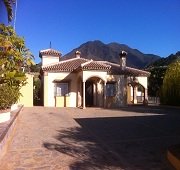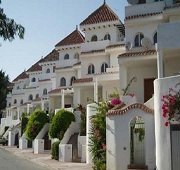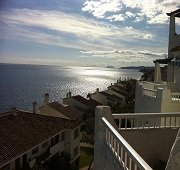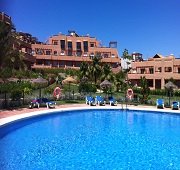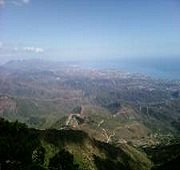|
"Flamenco in Andalucia, just has to be seen"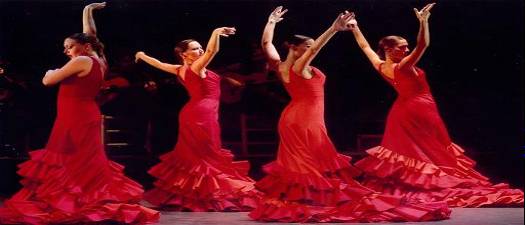
Flamenco in Andalucia Is a Spanish art form with roots deep in Andalucia — Spain’s southern region. Although there are clues as to how this dance and folk music evolved, the details are lost in history. Very much a major part of Spanish dancing is flamenco in Andalucia, which dates back many years ago. Even the origin of its name is elusive. Some attribute it to the early 1500s and the Flemish courtiers during the reign of Spain’s Charles V. Their bright clothing inspired the names given things garish or conspicuous, such as flamingoes and flamenco. Others say flamenco — still referring to the Flemish — was the nationality erroneously given by the common people to Gypsies. Still others claim the name comes from the Arabic fellah mangu — the labourer who sings. Flamenco’s characteristics Flamenco in Andalucia combines acoustic guitar playing, singing, chanting, dancing and staccato handclapping. The flamenco dancer performs with passion, fervour, even tortured expressions but always striving for grace and dignity. The guitar — there may be one or several — and the rapid rhythmic handclapping of the singers and dancers set the scene. Flamenco handclapping produces a sharp, almost piercing sound. Those performers not dancing or guitar playing hold the left arm still. It's bent at the elbow with the hand about neck high and just slightly cupped. The fingers of the right hand slap the left crosswise, covering the hollow. Try it yourself. If your fingers do not land squarely, the clap is dull, flat. When they hit just right, you’ll hear it. The dancer does not begin immediately, but waits, absorbing the strumming, clapping and singing until inspired to dance. Like American jazz, flamenco dancing involves improvisation. It's the dancer’s spontaneous expression of the moment’s emotions. The Spanish call it duende (DWEN-day). The word means goblin or fairy, but to the flamenco dancer it signifies an inner force that fuels an inspired performance. A dancer with duende goes beyond technical mastery to vent his or her feelings, achieving a powerful, compelling dance. Those who aren’t singing may shout encouragement: olé or ¡baile! ¡baile! — dance! dance! As an observer, you don’t really see good flamenco, you feel it. Flamenco blends many influences The Pyrenee Mountains, running along the Spanish-French border, have throughout history cut Spain off from the mainstream of European culture. But a Mediterranean coast hundreds of miles long opened the country to influences from cultures not only bordering this sea but beyond it as well. As a result, Spain’s folk music is completely different from what you’ll find in any other European country. Flamenco in Andalucia blends influences the earliest of which came from Hindu dances, the threnodies of Greek mourners and the mimes of Imperial Rome. In the days of the Roman Empire, Andalucian dance was already thriving and achieving a measure of fame. The writings of Pliny, Strabo and Martial mention the dancing girls of Cadiz, who were even then using castanets. Under Roman rule large numbers of Jews entered Spain. And the chanting of Jewish synagogue services found its way into the local music. In 711, the Moorish warrior Tarik crossed the narrow strait separating Europe and Africa at the western end of the Mediterranean. He brought with him an army that would conquer all of Spain. Thus began almost 800 years of Arab influence on the culture of Andalucia. Early in this occupation, as the new culture was beginning to take hold, a renowned Moorish singer named Ziryab settled into Cordoba. The songs he brought with him formed the basis of much Spanish music. Ziryab accompanied himself on a special lute. Traditionally, the lute has four strings, but he added a fifth. It was this five-stringed lute that evolved in Andalucia as the Spanish guitar. From high in the minarets of the mosques that sprang up throughout Andalucia, the muezzins would call the faithful to prayer. And their cry, too, colored the local singing. Finally, the Gypsies began to arrive in Spain during the 15th century. Large numbers settled in Andalucia. They brought intensity to the local music — sentimentality, tragedy. The Gypsies seem to have consolidated the assorted strains into the flamenco we know today. They cultivated and popularised cante hondo — deep singing. The name refers to the emotional depths reached by its singers. While its origins are ancient, it was not until after 1700 that flamenco came into its own. Throughout the 18th and 19th centuries it flourished, achieving a peak in popularity from about 1875 to 1900. Practically every Andalucian town in the period had its singing cafe. Seville boasted five. With few exceptions, the famed singers and dancers were Gypsies. Types of Flamenco There are more than a dozen varieties of flamenco songs. Many are laments. One classic type, the petenera, tells the story of a beautiful girl named Petenera who brings tragedy to herself and her village. Some songs are named after the Andalucian towns in which they are popular: granadinas (Grenada), malagueñas (Malagá), rodeñas (Ronda) and sevillanas (Seville). Words tend to be arbitrary, and the songs seem to have as many versions as there are singers. While flamenco songs and dances may differ with the performer and the location, they all have one element in common — emotion. Flamenco done right creates a profound, moving experience. Where to see flamenco in Andalucia Unfortunately, much flamenco today is staged for tourists and just doesn’t cut it. The performers may go through the motions, but they lack duende. Your best opportunities to see good flamenco will be at the flamenco festivals held throughout Andalucia during the summer. Andalucia’s fairs — ferias — held during spring, summer and early fall can also give you a look at fine flamenco. Take a late-evening stroll among the pavilions erected for these events. You can then watch dancing and singing that results from the spontaneous exuberance of Andalucians enjoying themselves. Flamenco in Andalucia |




